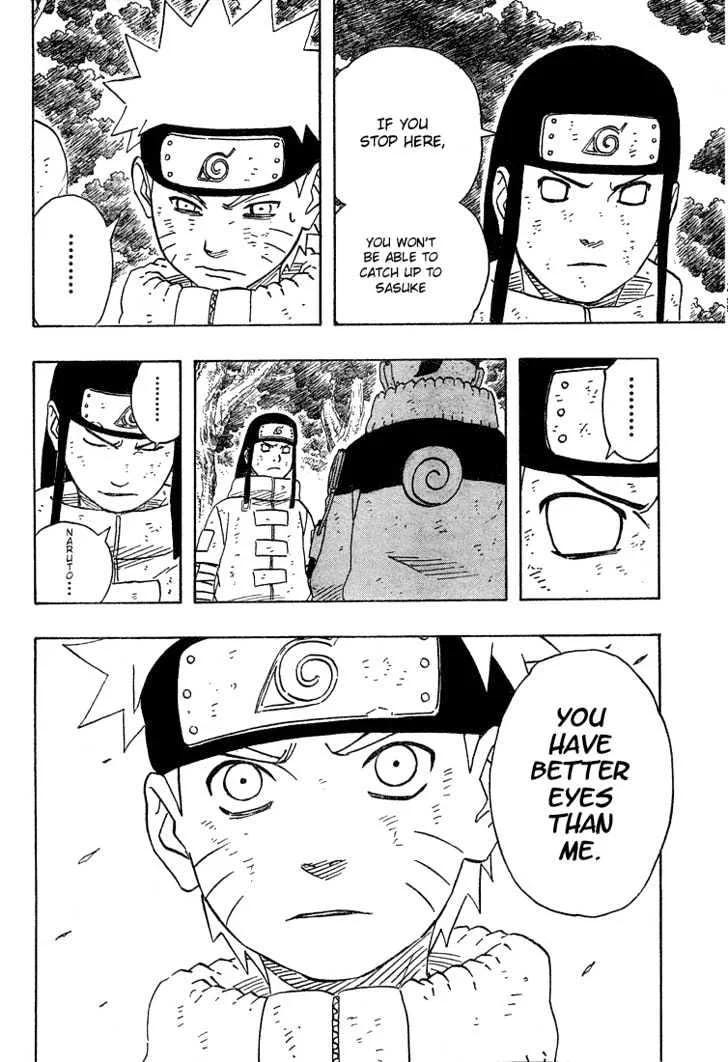From Idea Spark to Project Blueprint, Naruto Style
How to choose the right project and create a plan that helps you build something worth launching
Stage 1: The Idea
The first question you should be asking is, “Should I start this business in the first place? How do I do it? And will I be successful?”
Because this isn’t for the weak.
Before jumping in, you need to know what kind of creative entrepreneur you are, which means understanding your personality and then acting accordingly.
True successful entrepreneurs play the game strategically; they don’t just work harder than everyone else. They know when to push forward, when to rest, when to lean into their strengths, and when to innovate new solutions.
So the first thing you have to know? First, you are destined to be the founder, the business owner, and the boss of your dreams.
And second, this is the way to do it.
Here’s an exercise: Are you a prodigy businessperson or a genius founder?
Because there are only really two types of people in this world: a prodigy of life or a genius of hard work, and these are the archetypes that survive the most in business.
A good analogy for this mindset is the anime Naruto. Yes, I’m a nerd.
Say you are a ninja in Konoha.
You want to be the best, prove yourself, rise through the ranks, and become strong.
But how do you get there?
There are two main paths to success: the prodigy route and the genius course.
Think of the prodigy route like the Neji Hyugas of the world.
Neji was born with talent and trained in a specialized skill from an early age.
Everything he did was focused on perfecting that ability.
He didn’t waste time on things that didn’t align with his strengths.
Instead, he mastered what he knew and became undeniably great at it.
I feel like most people should do this one because it requires the least amount of effort.
Hear me out: some people, like Neji, are prodigies at martial arts. Others are prodigies at making ice cream.
Others are prodigies at coding.
And others at looking and feeling good.
If you have a unique strength, something that everyone has always told you was the thing you can write a book on or teach a class in, then focus on this one thing like a laser beam and perfect it.
But some don’t want to do things the easy way.
Some like to get a little dirty.
This is where Naruto Uzumaki comes in.
He’s the genius.
Naruto wasn’t born talented, and the odds were stacked against him.
People doubted him.
But instead of playing the same game as everyone else, he creates a new way to win.
He innovated—you too can do this!
If you train harder, find unconventional methods, and develop techniques no one else has, you too can find a solution to a problem that nearly no one has come up with.
You experiment.
You fail.
You keep pushing forward until you create your lane.
Naruto wasn’t supposed to be a great ninja.
He had no elite bloodline and no special techniques at birth, as far as he knew.
But he relentlessly found ways to turn his weaknesses into strengths—whether through sheer determination, creative solutions, or leaning on the right mentors.
And that’s exactly how success works in real life.
You either lean into your strengths like Neji, focusing on what you already know and do well, or you build your unconventional path like Naruto, creating something new that no one else has done.
Now that you know what person you are, it is time to narrow your focus. This will be called your niche.
Because the biggest mistake people make?
Trying to solve everything without knowing how.
Let’s say you want to start a business or make more money.
You wouldn’t wake up one day and say,
"I’m going to solve world hunger!"
…if you don’t even know how to grow food.
I used to do this a lot!
I thought I was a Jill of All Trades when I was a Mistress of None.
Many jump into random side hustles, startups, or money-making schemes
…without asking themselves, “What problem am I uniquely positioned to solve?”
This is usually referred to as your UVP—unique value proposition.
So again, either be a prodigy, meaning if you’re skilled in something, double down on it.
Use what you already know (your work, hobbies, or interests).
Example: If you’re good at coding, writing, or photography, focus on monetizing that.
Or if you’re stubborn and don’t have an obvious skill, be a genius and create a new solution.
If you don’t fit into a traditional skillset, build something unconventional.
If no one is hiring you, create your own opportunity.
The point is that hustling randomly doesn’t work.
Pick a problem you can actually solve—and go all in.
Okay, so you’ve identified your problem.
Now comes the next big mistake:
Trying to build the perfect solution before testing if people even want it.
STOP. DON’T OVERDESIGN.
Instead, focus on the MVP—Minimum Viable Product.
Here’s the reality:
You don’t need a fancy website.
You don’t need a huge marketing budget.
You don’t need to have everything figured out.
What you need to do is test your idea as quickly as possible.
Start small. Validate the idea. And iterate as you go.
That’s why Stage 1 of Vibe Coding isn’t “dream big.” It is “What would make your life easier right now?”
Here are six ways I help my clients pick an idea that’s buildable, meaningful, and likely to finish:
Idea Mining Techniques:
Scratch Your Itch
What have you needed lately?
Ex: “I needed a simple way to track how many free trials I was about to forget to cancel…”
Check Your Bank App
What tools are you paying for that you could rebuild with AI?
“I realized I pay $19/month for a digital journal. Could I make my own?”
Search History Audit
What problems have you Googled in the last 2 weeks?
Online Trends
What are people complaining about in your niche? Use keywords like “I wish there was an app for...”
Look for Compliment Projects
What could plug into something you've already made (or dreamed about)?
Let AI Help You Decide
Ask Perplexity or ChatGPT:
“Which of these ideas would be easiest to build with Supabase + GPT-4?”
Here is a good list to start with:
Trend Hunter
Exploding Topics
Google Trends
Gummy Search
Word of Mouth
I will be going deeper into how to use these resources in future articles.
Stage 2: Make a Plan, Not Just a Prompt
This is where 99% of beginner vibe coders mess up. I certainly did.
They jump into ChatGPT and say:
“Can you make me an app that does XYZ?”
And then wonder why the AI spits out something random, clunky, or unfinished.
Instead?
We write a PRD—what is known as a Product Requirements Document.
It’s not technical. It’s just a thinking framework.
Here’s what a good PRD answers (before you even touch the code):
What’s the app’s purpose?
ex) “To help freelancers track overdue invoices and automate follow-ups.”
What are the must-have features?
ex) Login, invoice creation, payment tracking, email reminder settings
What tools should we use?
ex) Supabase, Stripe, GPT-4, TailwindCSS
What’s the user journey?
ex) New user signs up → creates first invoice → links email → gets a reminder on Day 7
What does the MVP not include?
ex) No chat feature, no dashboard filters, no team accounts (for now)
When you give this to AI, it knows how to help you.
Yes, the AI can build anything—but only if you tell it what you want with clarity.
A confused prompt = a confused product.
A clear PRD = a working app.
There is other documentation that you can write as well, either by yourself or with the help of AI:
Technical Design Document (TDD)—this is the guideline of how the system will be architected. Includes APIs, databases, services, integrations, and web security. Usually side by side with the PRD.
User Journey Map/Workflow—a visualization of how users will interact with your product, from the onboarding to the feedback.
Wireframes/Prototypes—designs showing the key screens and interactions.
Release Plan/Roadmap—timeline of the feature releases from MVP to availability to the general public.
API docs—defines the endpoints, request/response payloads, and authentication details; this is the way that the frontend and backend of an app connect and work together.
Test Plan/QA Checklist—outlines how the validation happens, including edge cases and workflows to be verified.
Customer Support and Training Documentation—user manuals, knowledge base articles, and onboarding tutorials.
I will go into a little bit more detail as to how to do this the easy way in future articles.
Tools I Recommend
Here’s what I use (and what I teach inside Code Like A Cutie):
Bolt.new—Great for fast AI-first app builds with plain text prompts
Perplexity.ai—For researching your market and validating your idea
ChatGPT—Still the best for generating your base PRD with good prompts
I’m currently accepting a small founding cohort into Code Like A Cutie—my live coaching container for AI builders.
You’ll get:
PRD feedback on your actual idea
Real-time AI prompting help
Encouragement when you freeze or overthink
Apply for the Code Like A Cutie Founding Cohort; only 10 spots are available. DM for details.







I am not familiar with Naruto so it was harder to follow for me.
I did a course 100 days of AI and concluded after building 3-4 apps in various AI building sites that I am going to leave it to others. I will pay the $5 to have someone else keep up with the updates and details.
You can build apps with no code and no experience, but that does not mean you don't have to follow directions and understand the process. One example: I got the steps out of order and named something incorrectly. Fixing that did not require code, but an hour to figure out how to go back and rename it.
Sorry, I got off topic. I enjoyed the article.
Teach lots of people how to do it so I don't have to. :)
Love this post. And love the way you weave in Naruto!
Next post, please use Dragonball!!! Please..... 🤣